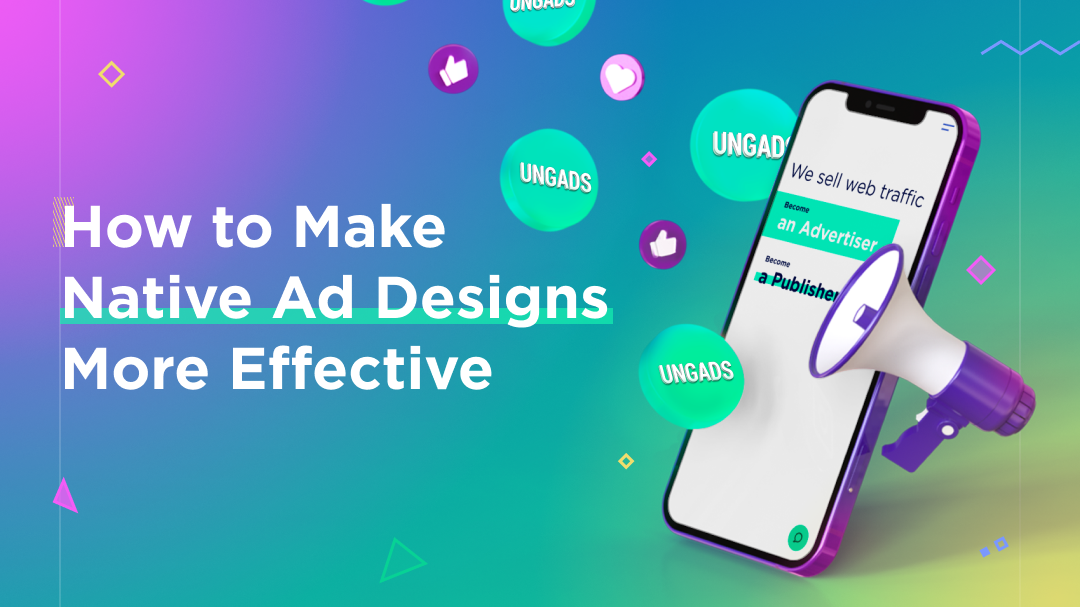About three out of every 10 Internet users had an ad blocker installed in 2018 – and that figure continues to rise each year. That fact means advertisers must find innovative ways to reach their targeted audience.
For many brands and businesses, native ad designs are the solution. This method has seen significant growth since 2010, with potentially up to 74% of all advertising revenue coming from this option for 2021.
Ignoring native ad options could be problematic for businesses that want to reach online leads. Knowing how to make the most of them to enhance brand awareness, attract consumers, and increase sales ensures that the benefits of this investment start coming your way.
What Is the Best Way to Create a Native Ad?
The best native ad designs adopt the look and feel of the apps or websites to where they’re placed. You see this trait on social media channels extensively, but the principle also applies to any online destination.
A native ad delivers essential information to consumers at a heightened discovery state. By taking a subtle approach, the experience feels more organic instead of providing a jarring result.
These steps make native ad designs more effective because they embrace those organic interactions.
1. Make the native ad valuable.
When designing the native ad, you’ll want to keep in mind how the audience will perceive its information. The goal should be to deliver the most value possible with this exposure.
Although it’s tempting to go for a hard sell, most businesses find that delivering helpful information creates a more successful campaign.
Since you have limited room to work, every character counts when designing the advertisement. Think about the actions you want someone to take and how to turn that into an appealing pitch.
2. Keep the experience personalized.
When native ad copy solves a person’s problems, it delivers information that creates an immediate connection.
It’s like the “How may I help you?” interaction that happens at a store. If you present a problem you face to that staff member and they can solve your issue with a specific product, you’re more likely to complete the transaction.
Since your space is limited, consider speaking with emotional words in the second-person language tense. Saying “you” is a simple way to increase engagement.
3. Keep your goals in mind.
Work the native ad backward from the result you hope to achieve. By crafting your creative energy around the call-to-action, you’ll find it easier to produce copy that leads people through the connection process.
4. Keep it simple and straightforward.
With limited space to use, you’re already removing words and phrases that don’t need to be in the native ad copy. It also helps to avoid using images or commentary that could offend or alienate potential customers.
The best native ad copy gets straight to the point. Use short sentences that leave no room for interpretation. When your information is easy to read and understand, it reduces the risk of coming across as abrasive.
That means consumers are more likely to engage with the information.
5. Use your brand name consistently.
People don’t form connections and relationships with companies. They create them with specific brands.
You don’t hear someone say, “I’d like to have a beverage made by PepsiCo today.” They want a Pepsi, a Sierra Mist, or some Tropicana juice.
Native ad copy gets better when you include brand information in logical ways. Use it in your descriptions and headlines to start forming name associations.
Even if you don’t earn a click, that name starts floating around in the consumer’s consciousness. If they require what you have, they might recall the brand interaction.
6. Write a native ad in the same way you would speak.
Natural writing is the most persuasive. People want brands and businesses to be authentic, showing off their expertise, innovation, and experience. That doesn’t mean you should avoid flourishes like a metaphor, but the native ad should come across like you’re having a conversation with that person.
The investment delivers better results when people feel like you made something just for them.
7. Use a call to action.
Once you’ve hooked a consumer with your native ad, it’s time to give them the next step of the process. What will that person miss out on if they continue with their day instead of paying attention to what you offer? Be specific to avoid confusion.
Native ad investments make sense because today’s consumers are ready to read and react to the information you offer. You can create a powerful message that resonates long after someone encounters it by focusing on these steps.


